Locked Deposit
This project emerged from a business need to expand the investment portfolio available to Nubank customers. From the outset, we aligned on the approach, deciding that this initiative would be an evolution rather than a complete refactoring.
The greatest challenge was maintaining the simplicity that defines Nubank’s account experience—where users automatically earn interest on their balance (100% of Brazil’s interest rate) without even realizing they’ve become investors. Our goal was to build on this simplicity while reinforcing Nubank’s positioning in financial control by offering benefits to users who plan their finances more effectively.
We followed a thorough process that included ideation sessions, four usability tests (both internal and external), and crafting a phased rollout vision. As the sole designer on this project, I led the design efforts but collaborated with my incredible team and research department whenever needed.
Problems & Goals
Diversify Nubank's product portfolio.
Introduce new investment products to our clients.
Encourage customers to plan their finances more thoughtfully.
Results
Currently in the alpha phase, we launched an internal MVP for Nubank employees. The results have been highly encouraging, surpassing our OKR for the semester. Our target was R$1MM in AUM within one month, and we achieved R$1.3MM in just two weeks.
We are excited about the progress and look forward to the next phases of the launch.
Methodology
1. Understanding and Framing the Problem
The first step was to align on the project direction. We considered two options: evolving the existing products (Account and Buckets) or stepping back to rethink the entire product strategy.
After collaborative discussions with the business and technology teams, as well as leadership, we collectively decided that evolving the current products would have a more immediate impact—offering faster development and higher returns for the business.
This approach also allowed us to allocate time and resources in the future for a deeper discovery phase to explore what a complete refactoring might look like.
2. Locked Deposit Exploration
The first step was to understand the mechanics of this new product. While many competitors already offered similar solutions, we aimed to create something uniquely aligned with Nubank's design philosophy. Unlike most of the market, which relies on complex marketplaces with multiple steps to select investments, we wanted to avoid intimidating users unfamiliar with investing.
Our goal was to identify a simple, relatable metaphor from users’ daily lives to help them easily understand and confidently engage with the product. We started by exploring high-level flow possibilities and designing an initial test for internal use with employees. This early test served as a foundation for refining the experience in preparation for broader external testing with customers.


3. Internal Research
We conducted an initial usability test with prototypes, involving 8 participants. These internal tests allowed us to explore key attributes—such as varying levels of knowledge about investments and technology—within the company's large and diverse workforce.
While not a perfect substitute for external testing, this pilot study served as a valuable foundation for refining our approach before moving into field research. Our primary focus was understanding users’ mental models around money and validating whether the product concept resonated with them.
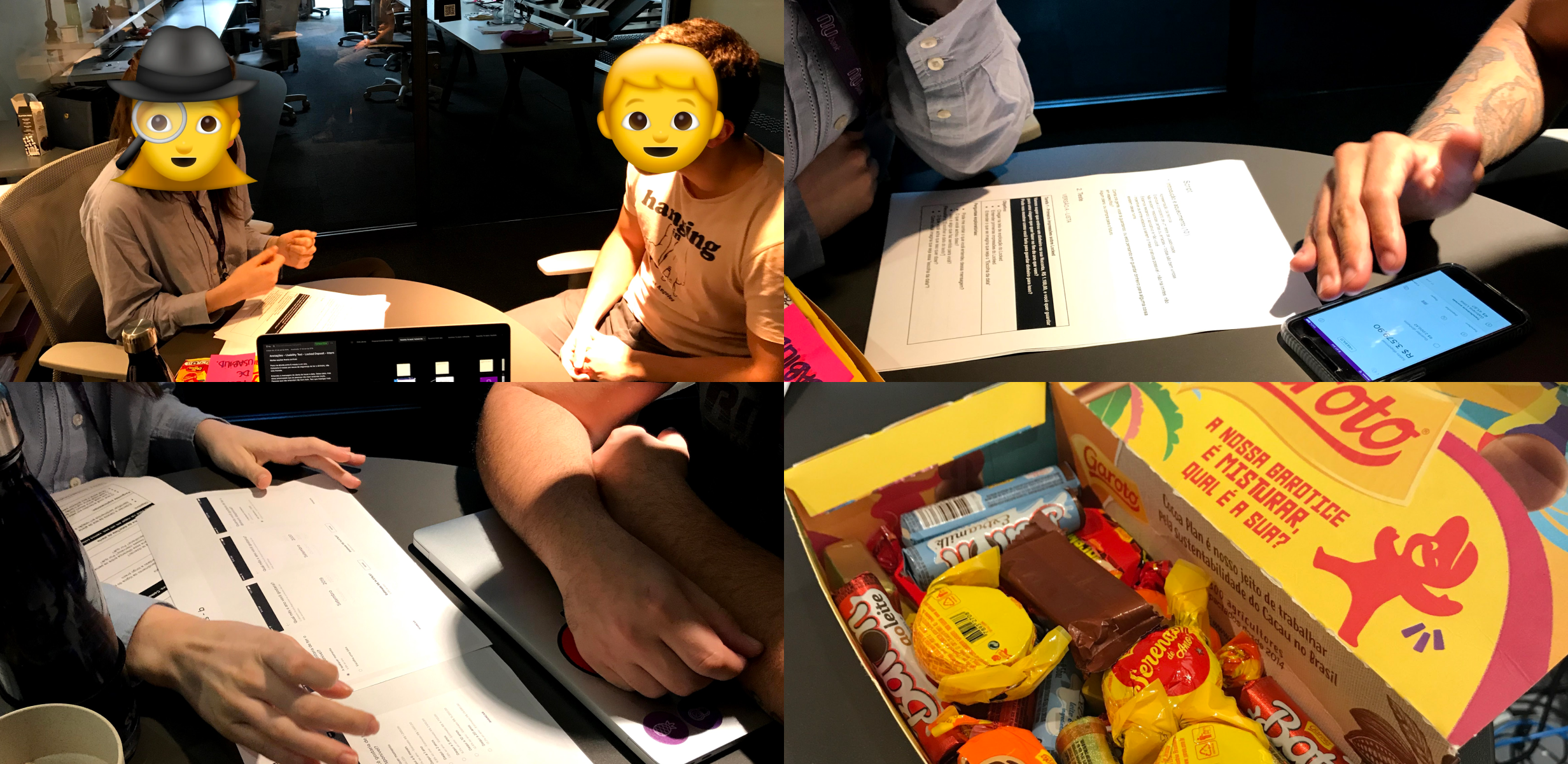
4. Refinements & Explorations
After conducting and consolidating the initial tests, we implemented a new round of refinements and explorations based on user feedback. The goal was to address usability issues, develop an updated prototype, and prepare for external research with customers
To kickstart this phase, we held a workshop with the team, leveraging the Crazy 8 method to brainstorm and explore innovative solutions. This collaborative effort helped us align on key improvements and ensure the next iteration was user-focused and ready for testing.
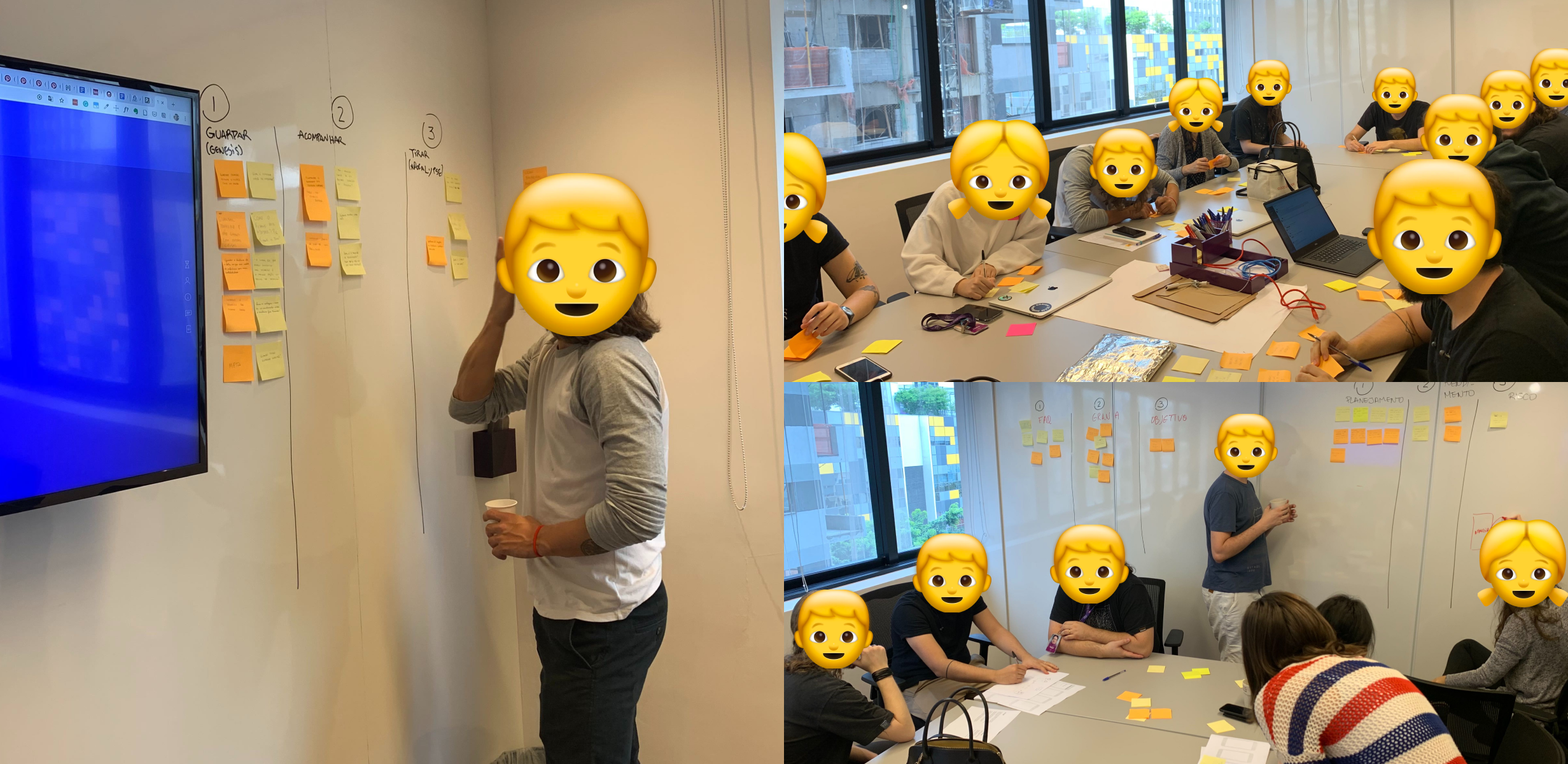
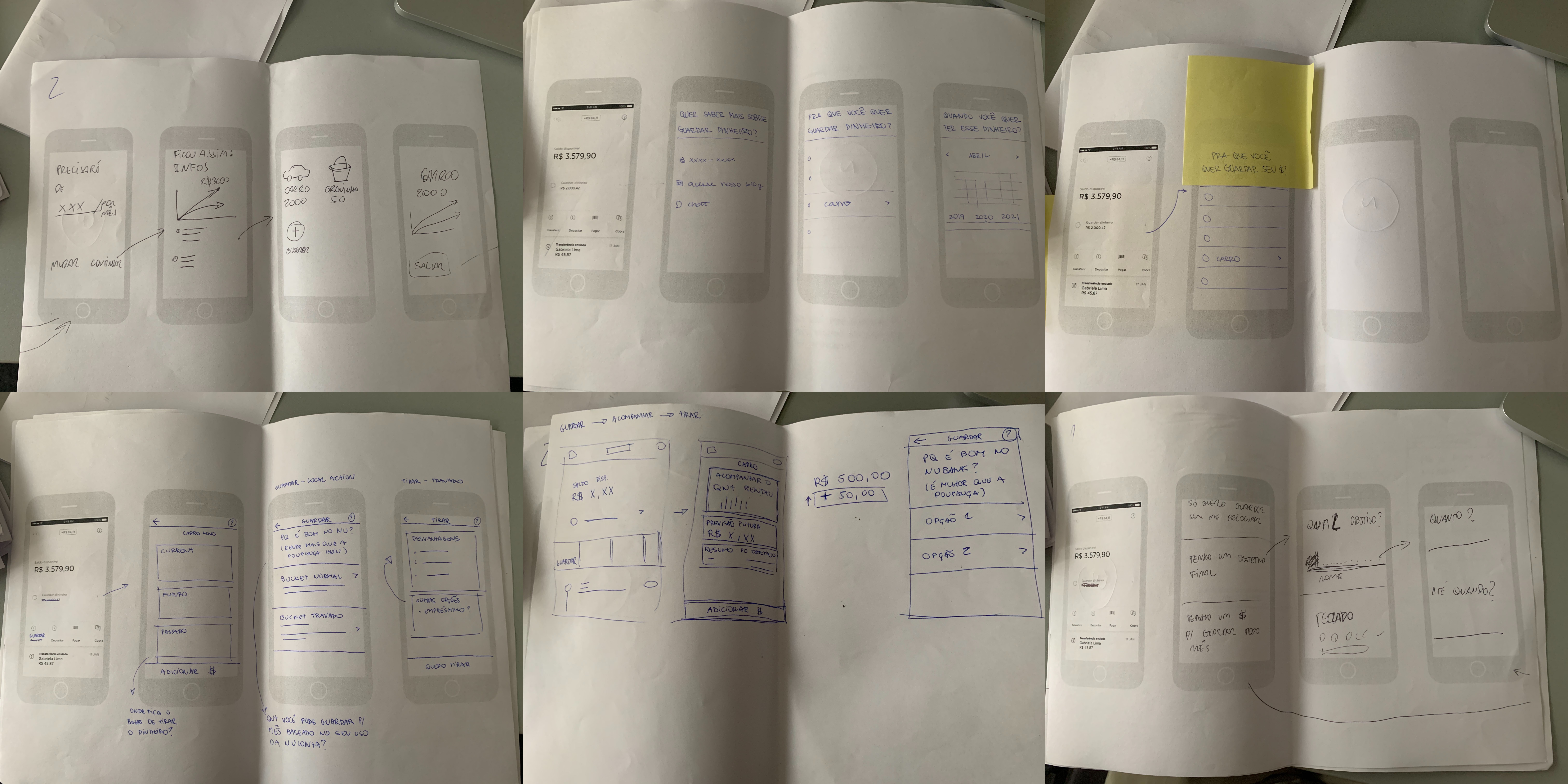
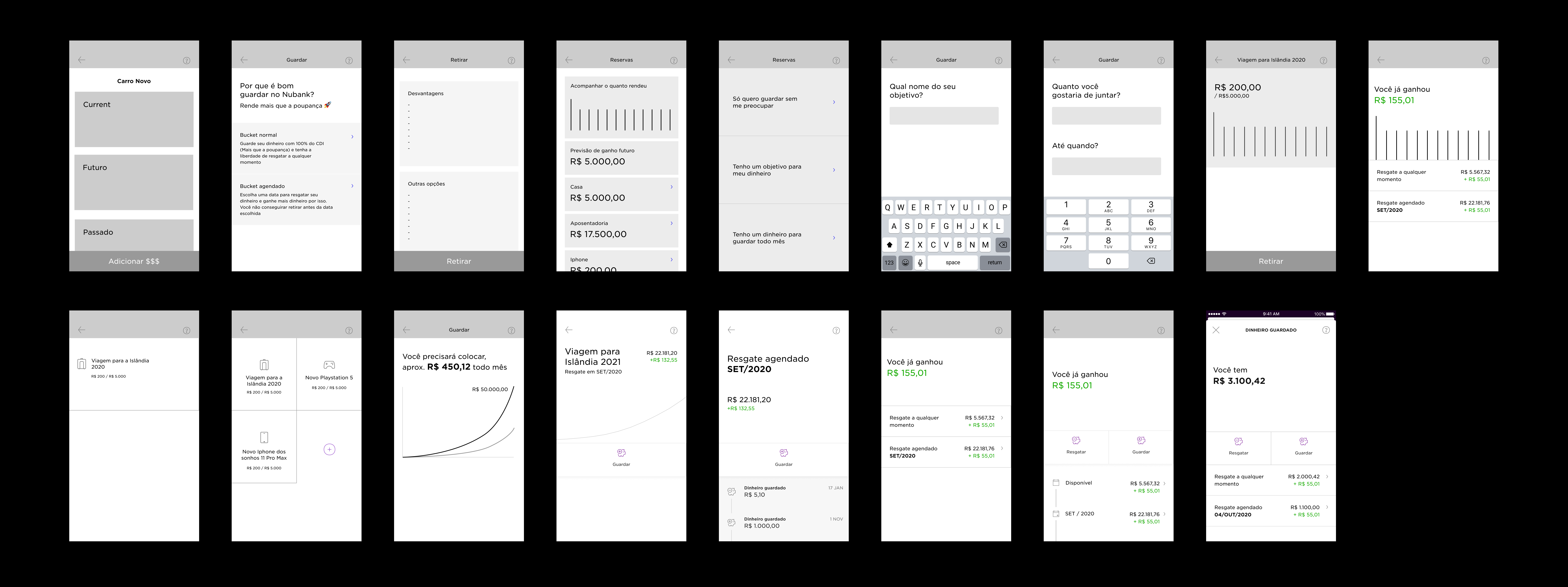
Building on the materials generated during the workshop, we compiled and digitized the ideas into wireframes. From there, we began exploring new concepts to test with customers, focusing on usability and aligning with the refined product vision.
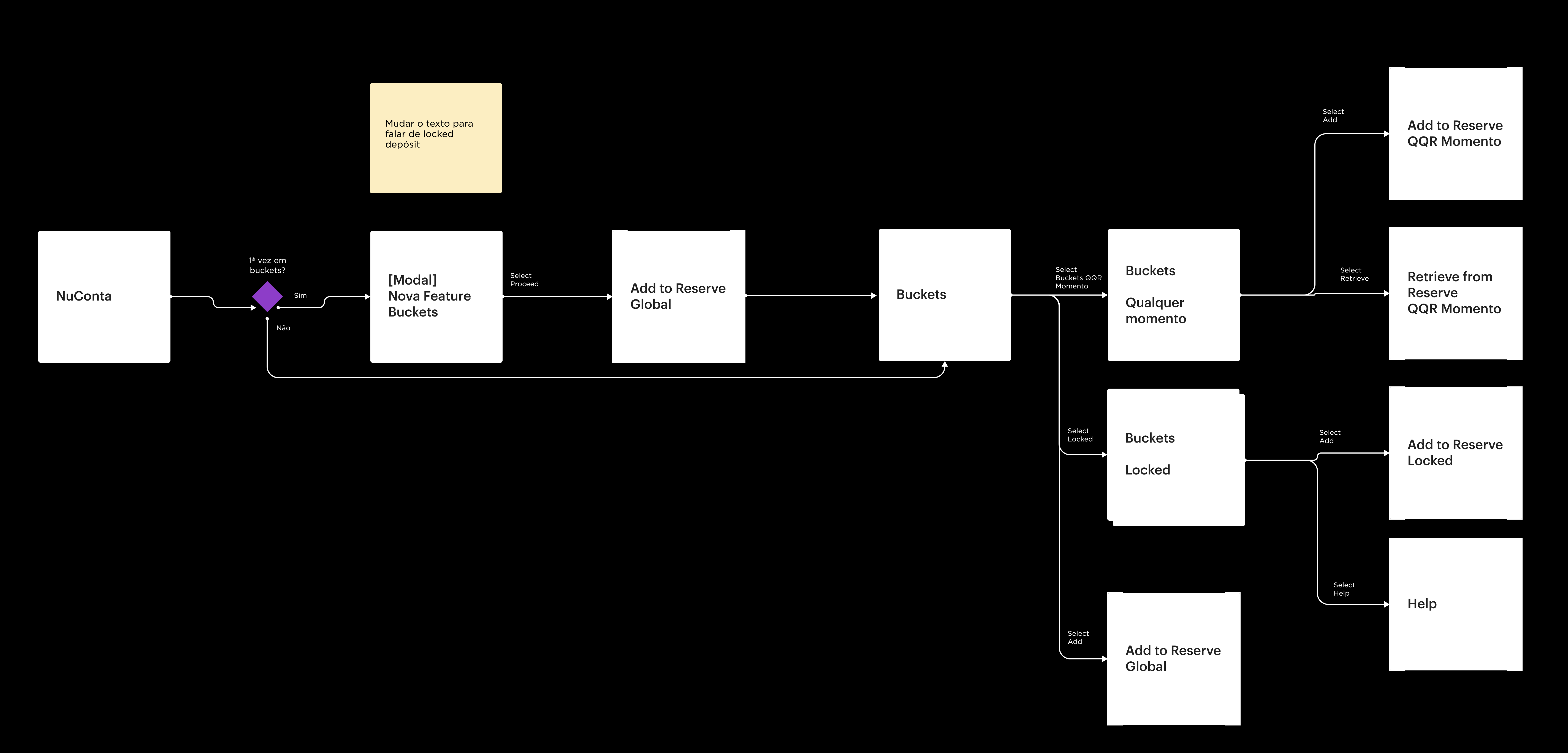
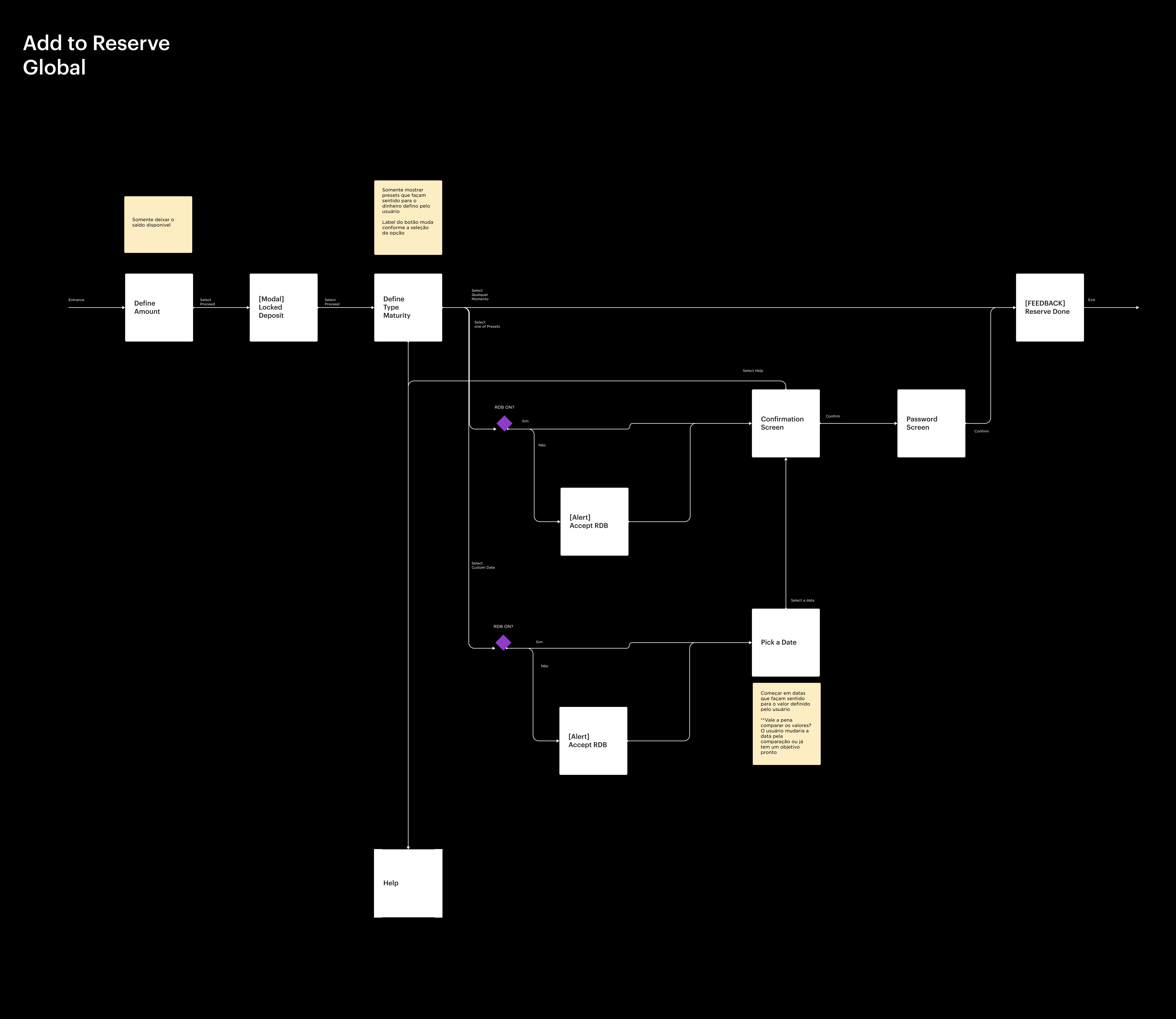

5. External Research
The goal of this research was to determine whether users, regardless of their financial or investment knowledge, felt motivated to adopt our new product. We also aimed to evaluate if the product was easy to understand and use for both experienced investors and first-timers. In total, we interviewed 12 participants.
Our hypothesis was that reducing financial jargon and simplifying information would make the product more accessible and inclusive. Based on the feedback, we compiled a comprehensive list of improvements, categorized by insights from users who already used our product and those who were new to it. These findings guided the next phase of development.
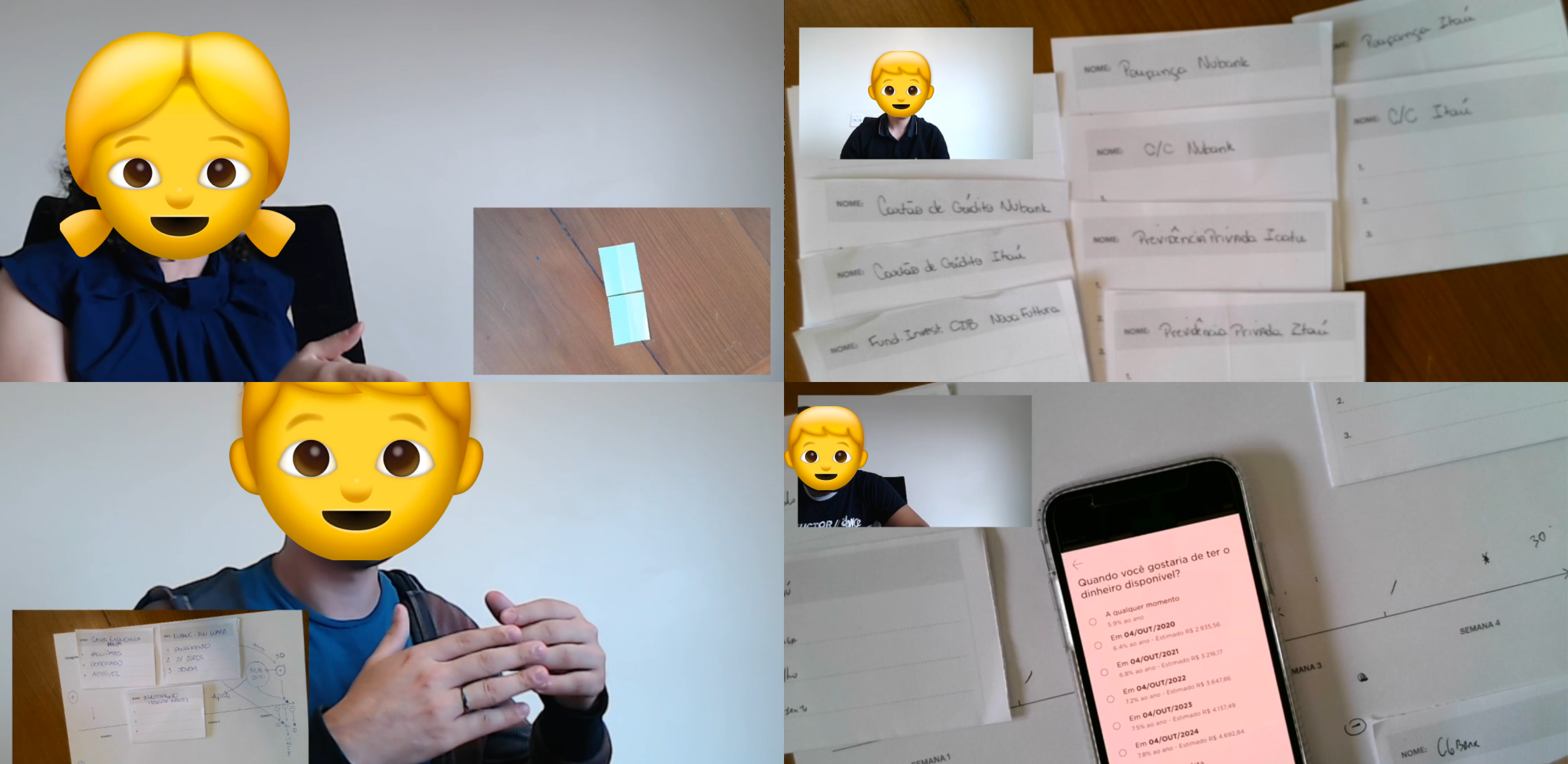
6. Refinements & Decision-Making
We revisited the interactions in our prototype, exploring new solutions to address the problems identified during testing. The goal was to refine the flow, account for edge cases, and create a high-fidelity version of the experience.
To resolve conceptual uncertainties, we organized a workshop where we presented possible solutions and collaborated as a team to decide on the best path forward. This iterative process ensured alignment and prepared us to develop a new prototype for further customer research.
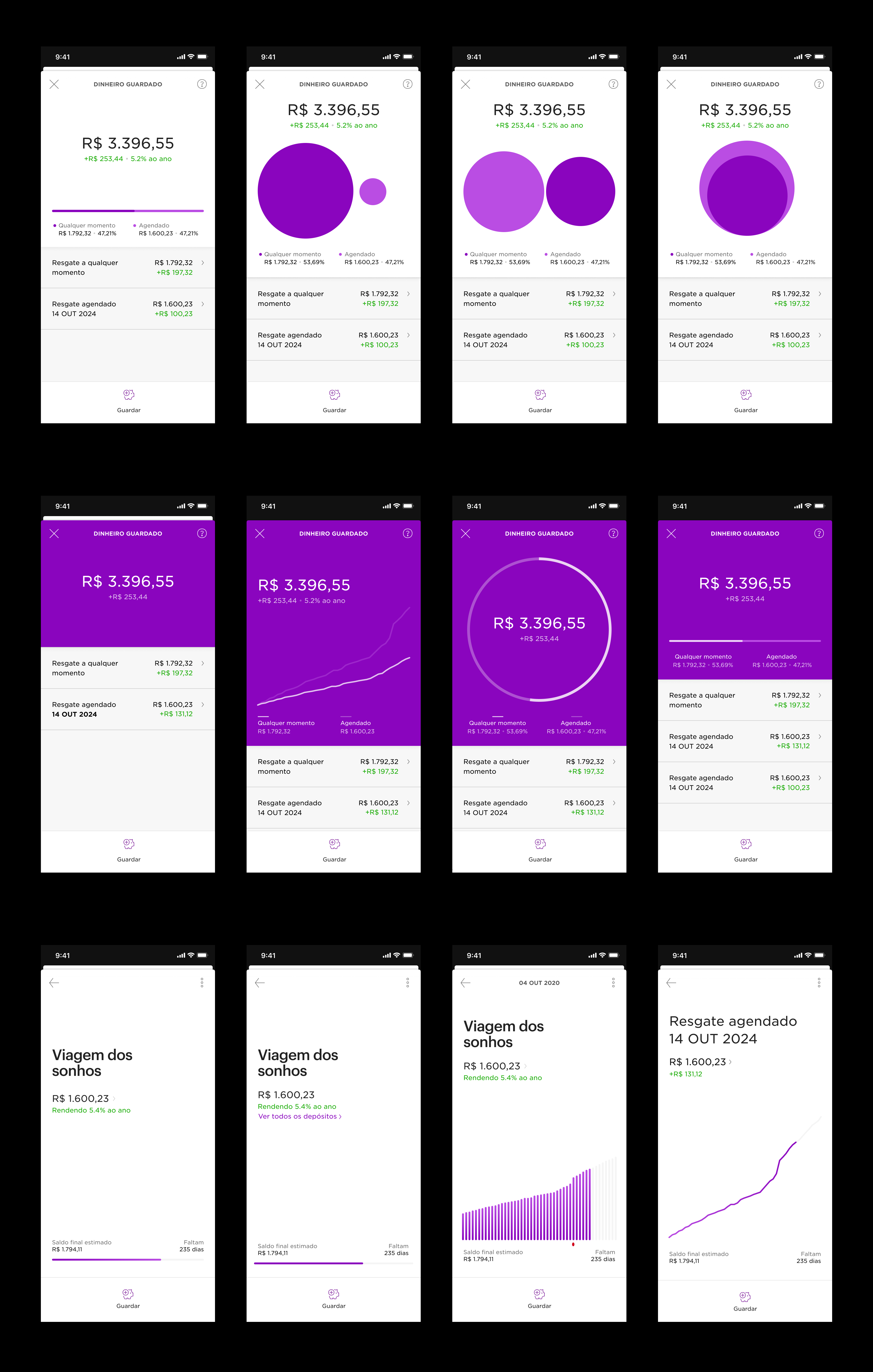
7. External Research
This time, we conducted a test to ensure we weren’t overlooking anything and to evaluate whether our refinements had resolved previous issues. A total of 12 participants were interviewed, providing valuable feedback to validate our updates and confirm the effectiveness of our adjustments.
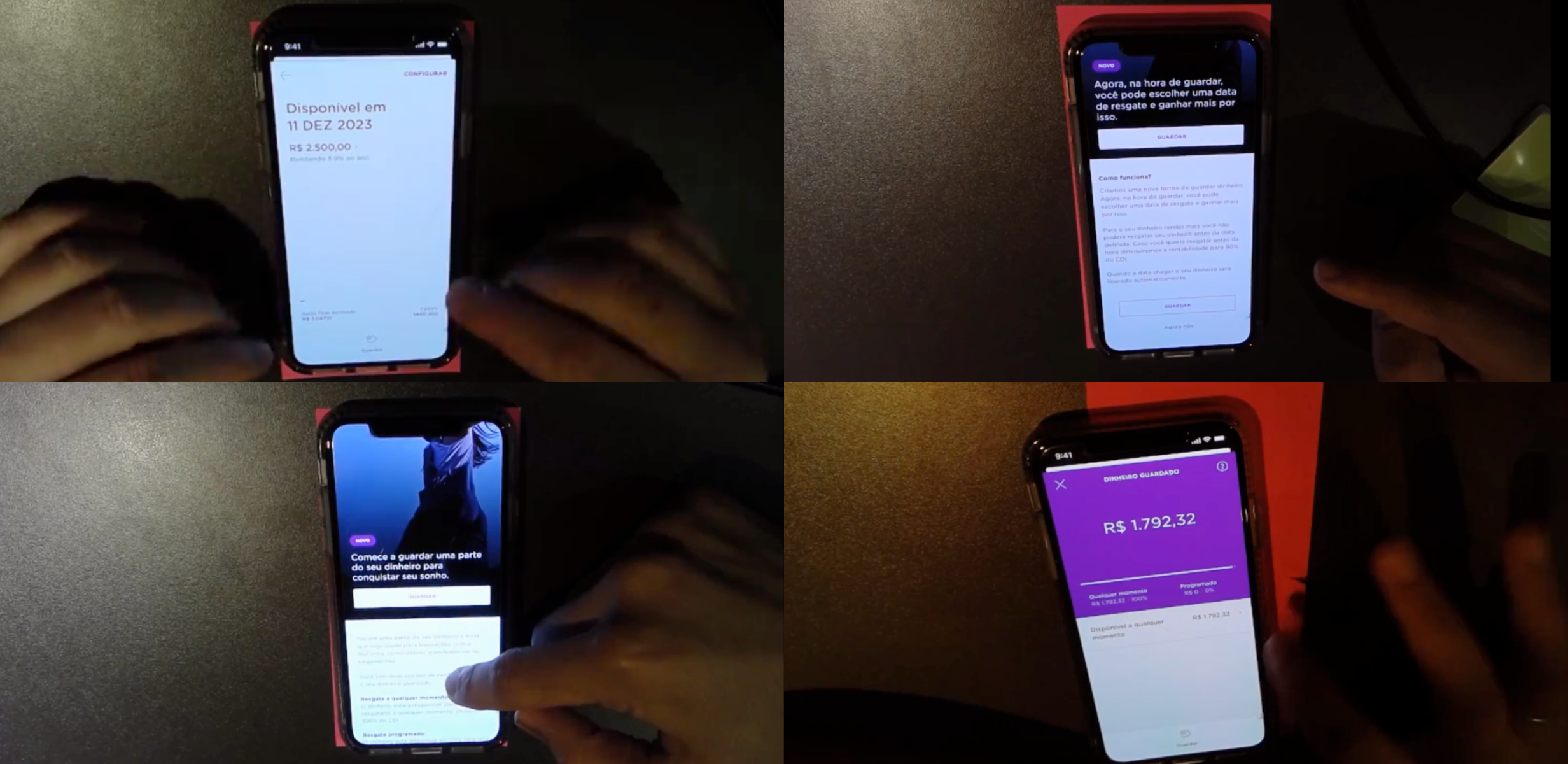
8. Final Explorations
After completing the final round of testing before launch, we made the last adjustments and finalized the product flow.
At Nubank, accessibility is a critical part of every project. For this initiative, we created an accessibility map and conducted internal testing to identify and address any potential gaps, ensuring the product was inclusive and usable for all users.
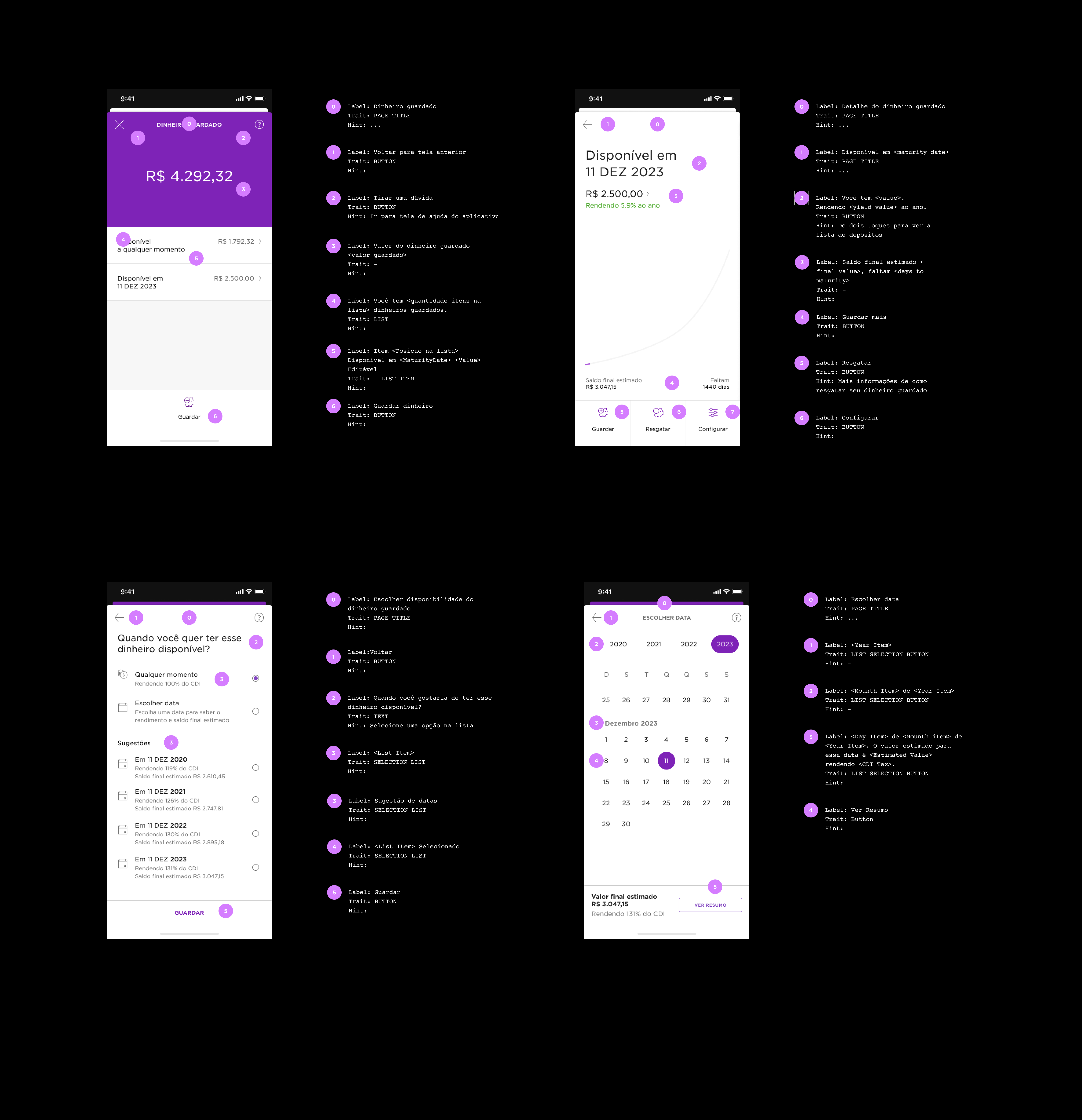
9. Release Plan & MVP
Given the importance of this project to the company, our release strategy is phased: we develop and launch the product to a limited customer base, gradually expanding while testing, learning, and refining as needed. This approach also allows us to roll out new features incrementally.
Currently, we are in the alpha phase, with the product exclusively available to company employees. The initial results are highly positive, and we are excited for the first external release.